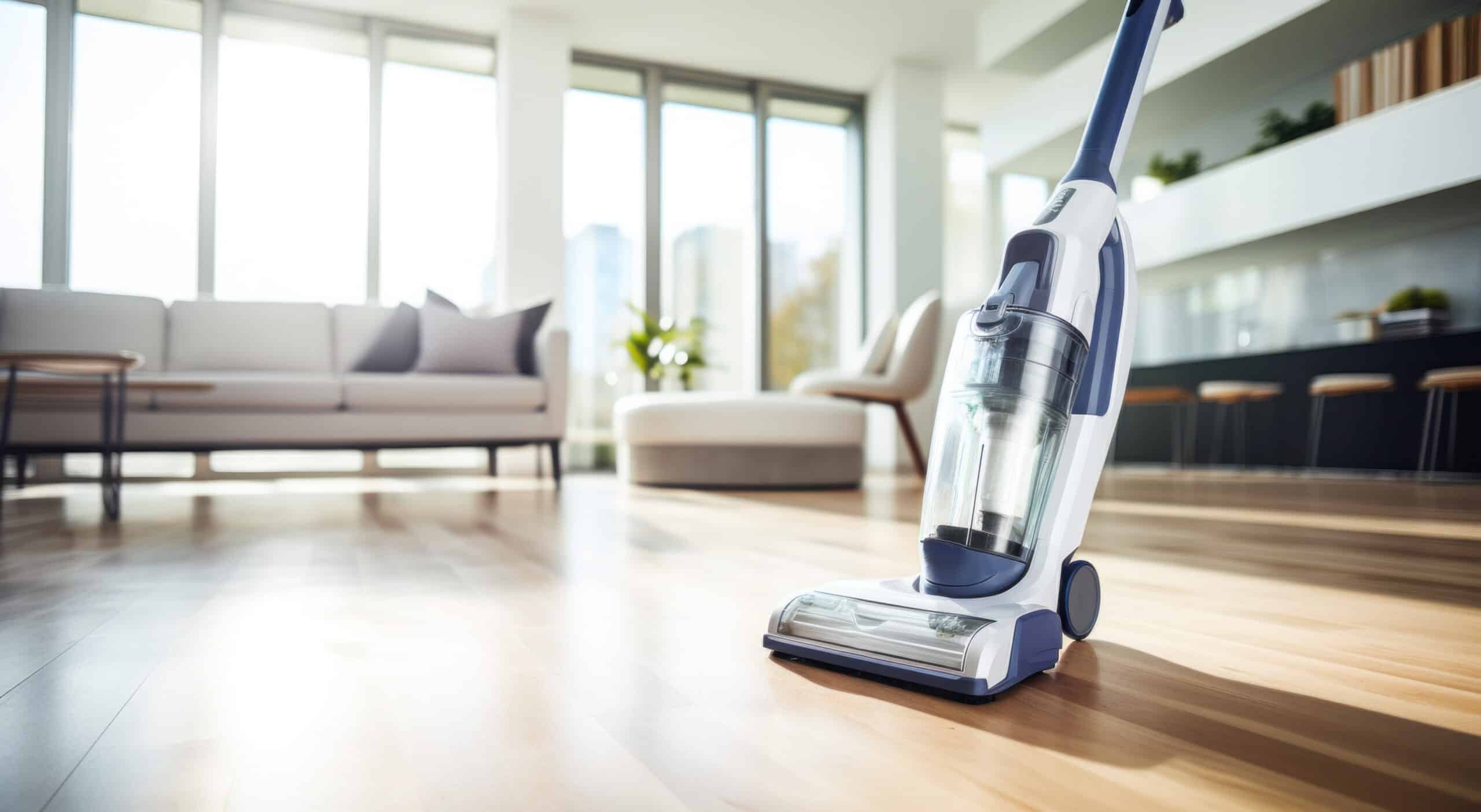How Does A Vacuum Cleaner Work?
Key Takeaways
- A vacuum cleaner creates suction by using an electric motor to turn a fan with angled blades, creating a low-pressure or partial vacuum inside the vacuum cleaner.
- The components of a vacuum cleaner that work together to make it function effectively include the electric motor, power source or cord, hose, internal fan, powerhead, attachments, and filters, among others.
- Consumers can choose between bagged and bagless vacuum cleaners, with bagged models offering better filtration and cleanliness, while bagless models are more cost-effective and environmentally friendly.
When it comes to keeping our homes clean and free of dust and dirt, vacuum cleaners are our trusty allies. But have you ever wondered how these machines work their magic? In this article, we’ll take a closer look at the inner workings of a vacuum cleaner and explore the different components that make it all possible.
The Basics of Suction
A vacuum cleaner creates suction by using an electric motor to turn a fan with angled blades. As the fan blades turn, they force air forward, increasing the air pressure in front of the fan and decreasing it behind the fan. This pressure drop behind the fan creates suction, or a partial vacuum, inside the vacuum cleaner. The lower air pressure inside the vacuum cleaner then allows the ambient air to push itself into the vacuum cleaner through the intake port.
This process of creating a low-pressure or partial vacuum inside the vacuum cleaner is what enables it to draw in air, along with dust and dirt particles, from the surrounding environment.
Components of a Vacuum Cleaner
Now that we understand the basic principle of suction, let’s take a closer look at the different components that work together to make a vacuum cleaner function effectively:
- Electric Motor: The electric motor powers the suction mechanism of the vacuum cleaner. It is responsible for turning the fan blades that create the airflow.
- Power Source or Cord: The power source supplies electricity to the vacuum cleaner, allowing the motor to operate.
- Hose: The hose provides flexibility and reach, allowing the user to access corners and elevated surfaces.
- Telescopic/Extension Tube: The telescopic or extension tube is attached to the hose and provides additional length, making it easier to reach high or hard-to-access areas.
- Internal Fan: The internal fan, driven by the electric motor, creates the airflow necessary for suction.
- Powerhead: The powerhead, also known as the beater bar or brush bar, contains rotating brushes or rollers that agitate and lift dirt and debris from surfaces.
- Attachment: Attachments such as crevice tools and upholstery brushes are included with vacuum cleaners to cater to different cleaning needs.
- Speed Controller: The speed controller allows the user to adjust the power and speed of the vacuum cleaner, depending on the cleaning task at hand.
- Suction Control: Some vacuum cleaners have a suction control feature that allows the user to adjust the strength of the suction, useful for delicate surfaces or curtains.
- Headlight: In some models, a headlight is included to illuminate dark areas and help the user see hidden dirt and debris.
- Control Module: The control module houses the electronic components that control various functions of the vacuum cleaner, such as power and brush rotation.
- Drive Belt: The drive belt connects the motor to the brush roller, enabling it to rotate and agitate the surface being cleaned.
- Filters (True HEPA and HEPA Style): Filters are essential components of vacuum cleaners as they trap dust, allergens, and pet dander, maintaining clean air output. True HEPA filters offer superior filtration, while HEPA-style filters provide effective filtration at a lower cost.
- Dust Bag: Some vacuum cleaners use disposable dust bags to collect and store the dirt and debris during the cleaning process, while others have reusable dustbins.
- ON/OFF Switch: The ON/OFF switch allows the user to control the operation of the vacuum cleaner.
- Caster (Wheels): Casters or wheels provide mobility and ease of movement, allowing the vacuum cleaner to be easily maneuvered around the house.
Bagged vs. Bagless Vacuum Cleaners
One decision that consumers often face when choosing a vacuum cleaner is whether to opt for a bagged or bagless model. Both types have their own strengths and weaknesses:
Bagged Vacuum Cleaners:
- Good for allergies: Bagged vacuum cleaners typically have better filtration systems, which can be beneficial for individuals with allergies or respiratory sensitivities.
- Less messy to empty: Since the dust and debris are collected in a bag, emptying it is usually a cleaner and more hygienic process.
- Keep the vacuum cleaner clean: Bagged models tend to keep the internal components of the vacuum cleaner cleaner, as the dirt is stored in a separate bag.
- Do not require touching the dirt: Those who are averse to coming into contact with dirt may prefer bagged vacuum cleaners, as the bag can be disposed of without direct contact.
- Expensive: Bagged models often require the purchase of replacement bags, which can add to the overall cost of ownership.
- Not environmentally friendly: The use of disposable bags contributes to waste, making bagged vacuum cleaners less environmentally friendly.
- Reliant on bag availability: Bagged models require the availability of compatible bags, which may not always be easily accessible.
Bagless Vacuum Cleaners:
- Better for the environment: Bagless models eliminate the need for disposable bags, reducing waste and making them more environmentally friendly.
- Cheaper to run: Without the need to purchase replacement bags, bagless vacuum cleaners can be more cost-effective in the long run.
- Convenient to use: Bagless models allow users to see when the dustbin is full, eliminating the need to guess when it’s time to empty it.
- Require more frequent emptying: The smaller dustbin capacity of bagless models may require more frequent emptying during cleaning sessions.
- Messy to empty: Emptying the dustbin can be a messy process, as the collected dust and debris may become airborne.
- Can get blocked: The dust and debris collected in the dustbin can sometimes accumulate and block the airflow, affecting the vacuum cleaner’s performance.
Ultimately, the decision between a bagged or bagless vacuum cleaner depends on individual needs and preferences. Consider factors such as allergies, environmental concerns, cost, and convenience when making your choice.
Conclusion
Vacuum cleaners have become indispensable tools in our quest for clean and tidy homes. Understanding how they work and the different components that make up these machines can help us make informed decisions when purchasing a vacuum cleaner that best suits our needs.
Whether you opt for a bagged or bagless model, regularly maintaining and cleaning your vacuum cleaner will ensure its optimal performance and longevity.
FAQs:
Q: Why are vacuum cleaners important in our daily lives?
Vacuum cleaners play a crucial role in maintaining cleanliness and removing dust and debris from our surroundings. They help create a healthier and more hygienic environment for us to live in.
Q: How does a vacuum cleaner work?
A vacuum cleaner works by utilizing a motor to generate suction power. The suction mechanism collects dust and debris, which is then stored in a dust collection system equipped with a filter. The airflow, from intake to expulsion, helps in efficient cleaning.
Q: What are the different types of vacuum cleaners?
There are various types of vacuum cleaners available in the market. These include upright, canister, stick, robotic, and handheld vacuum cleaners. Each type has its own pros and cons, and it’s important to consider your specific needs before choosing one.
Q: How should I maintain and care for my vacuum cleaner?
Regular cleaning and maintenance are vital for optimal performance. It is important to clean filters, brushes, and other parts regularly. Additionally, worn-out components should be replaced when necessary to ensure the vacuum cleaner’s efficiency.
Q: Why should I make an informed decision while purchasing a vacuum cleaner?
Making an informed decision while purchasing a vacuum cleaner allows you to choose the type that suits your specific needs. By understanding the working principles and different types available, you can ensure that you invest in a vacuum cleaner that will provide effective cleaning and meet your requirements.






